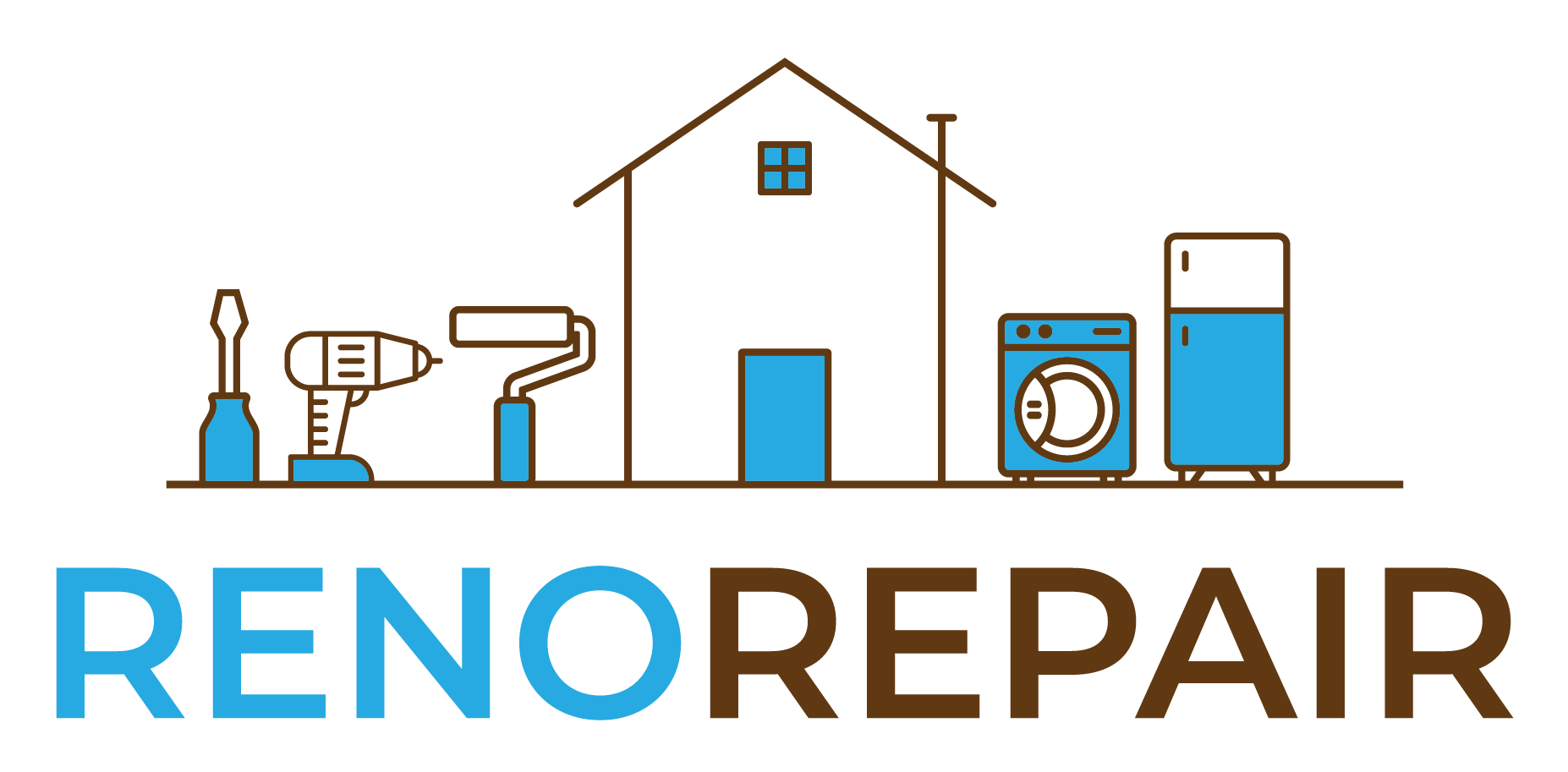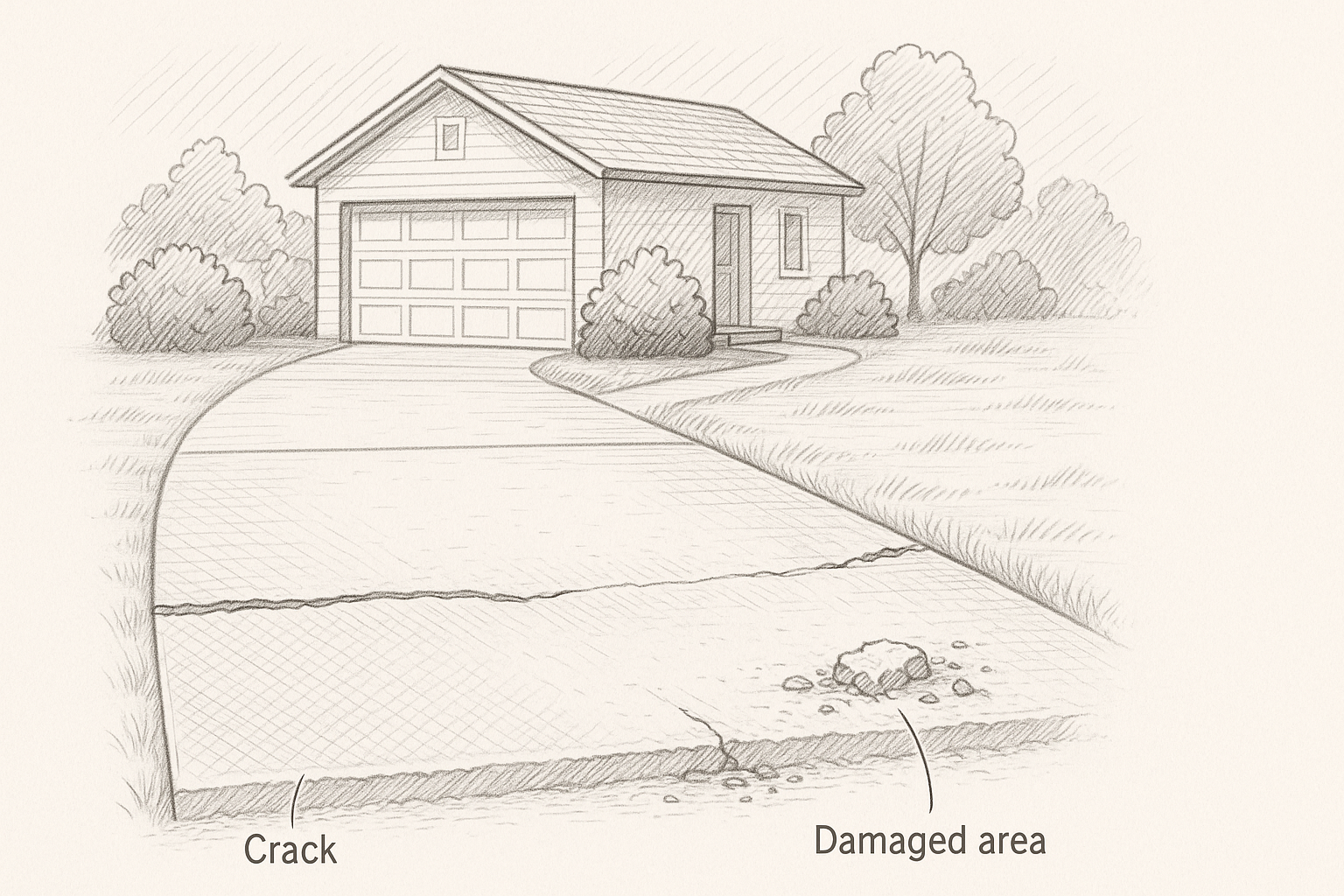Your driveway has a crack that’s been growing all winter. There’s a chip in your front step that catches your toe every time you walk up. The concrete pad under your AC unit is settling and creating a gap.
These might seem like minor annoyances, but small concrete problems have a habit of becoming expensive headaches if you wait too long.
Why Small Concrete Repairs Matter More Than You Think
Concrete might look solid and permanent, but it’s constantly battling the elements. In the Greater Toronto area, our freeze-thaw cycles are particularly brutal on concrete surfaces. Water gets into small cracks, freezes, expands, and creates bigger cracks. What starts as a hairline fracture can become a pothole in just one winter season.
The good news? Most concrete issues you’ll face around your home are actually small, manageable repairs that don’t require major construction or permits.
Common Small Concrete Repairs Every Homeowner Should Know About
Crack Sealing
What it is: Filling cracks in driveways, walkways, and garage floors before they widen
When you need it: Any crack wider than a credit card
Why it matters: Prevents water infiltration and freeze damage
Patch Repairs
What it is: Fixing small holes, spalled areas, or broken sections up to about 4 square feet
When you need it: When concrete is chipping, flaking, or has small holes
Why it matters: Stops deterioration from spreading to surrounding concrete
Step Edge Repairs
What it is: Rebuilding chipped or broken step corners and edges
When you need it: When step edges are crumbling or creating trip hazards
Why it matters: Safety and preventing further structural damage
Control Joint Maintenance
What it is: Re-sealing the planned joints in concrete slabs
When you need it: When joints are cracked or sealant is missing
Why it matters: Keeps water out and maintains proper expansion/contraction
Minor Slab Lifting
What it is: Lifting slightly settled concrete sections using mudjacking
When you need it: When walkway or driveway sections create small trip hazards
Why it matters: Restores level surfaces and proper drainage
Warning Signs: When to Take Action
Don’t wait until small problems become major reconstruction projects. Here’s what to watch for:
Act Now:
- Cracks wider than a credit card
- Any concrete creating trip hazards
- Water pooling against your foundation after rain
- Concrete pieces flaking off surfaces
- Weeds or moss growing through joints
Monitor Closely:
- Hairline cracks (seal before next winter)
- Minor surface wear
- Small chips that aren’t worsening
Timing Your Concrete Repairs in the GTHA
Concrete work isn’t a year-round activity in our climate. The material needs proper conditions to cure and bond correctly.
Best Months: May Through September
This is prime concrete season. Temperatures are consistently above 10°C, rainfall is manageable, and there’s no risk of freeze damage during the critical curing period.
Shoulder Months: April and October
These can work, but you’re gambling on weather. A late frost in April or early freeze in October can ruin fresh concrete work.
Avoid: November Through March
Cold temperatures prevent proper curing, and freeze-thaw cycles during the curing process will compromise the repair from day one.
Planning Tip
If you notice concrete problems in fall or winter, document them with photos and plan your repairs for spring. This gives you time to research contractors and budget for the work.
What Makes Small Concrete Repairs Different
Unlike major concrete projects that require permits, excavation, and engineering, small repairs are:
- Predictable in scope – A crack is a crack, a small hole has defined boundaries
- Quick to complete – Most take 2-4 hours plus curing time
- Weather-dependent but flexible – Can often work around short weather windows
- Immediately beneficial – You’ll see and feel the improvement right away
The Cost of Waiting
Here’s the reality: a $200 crack sealing job in May can become a $2,000 section replacement by the following spring. Small concrete repairs have some of the best return on investment of any home maintenance task.
Every freeze-thaw cycle without proper sealing expands cracks. Every rainfall through broken joints undermines the foundation beneath. Every winter of neglect compounds the damage.
Getting the Work Done Right
Small concrete repairs might look straightforward, but they require proper materials, timing, and technique. The wrong patching compound or poor surface prep can mean your repair fails within months.
Look for contractors who:
- Understand local climate challenges
- Use appropriate materials for your specific repair
- Can work within optimal weather windows
- Provide clear timelines including curing requirements
Take Action This Season
Walk around your property this week. Look at your driveway, walkways, steps, and concrete pads. Take photos of any cracks, chips, or settling you notice.
Those small problems you’ve been ignoring? They’re not going to fix themselves, and they’re definitely not going to get cheaper to repair.
The best time to fix small concrete problems is before they become big ones. The second best time is right now.

